DOI:10.32604/cmc.2022.020292

| Computers, Materials & Continua DOI:10.32604/cmc.2022.020292 |  |
| Article |
Optimal Routing Protocol for Wireless Sensor Network Using Genetic Fuzzy Logic System
Computer Department, College of Sciences and Arts in Ar Rass, Qassim University, Ar Rass, Saudi Arabia
*Corresponding Author: Abdullah Alabdulatif. Email: a.alabdulatif@qu.edu.sa
Received: 18 May 2021; Accepted: 20 July 2021
Abstract: The wireless sensor network (WSN) is a growing sector in the network domain. By implementing it many industries developed smart task for different purposes. Sensor nodes interact with each other and this interaction technique are handled by different routing protocol. Extending the life of the network in WSN is a challenging issue because energy in sensor nodes are quickly drained. So the overall performance of WSN are degraded by this limitation. To resolve this unreliable low power link, many researches have provided various routing protocols to make the network as dependable and sustainable as possible. While speeding up the data delivery is also considered to be an effective approach to save energy. To achieve this objective, we propose a new energy efficient routing protocol using genetic fuzzy logic system. Our primary objective is to save energy by sending data packets via the shortest path. Numerous studies have proved that the clustering protocol plays an important role in prolonging the life of the sensor node in the WSN. Keeping up with this our second objective is selection of head node from a cluster. This cluster head is selected based on the availability of maximum residual energy among the nodes, lifetime of head-to-head link, and its minimum distance to the base station. The genetic fitness approach is proposed for optimal routing and the selection of cluster head (CH) is employed with fuzzy logic system. As a result, the genetic fuzzy logic system (GFLS) can effectively accelerate the process to solve this problem. MATLAB is used to deploy nodes in WSN. The performance is calculated in terms of efficiency, delay, packet delivery rate and network throughput. The performance is compared with previous pertinent work. The proposed approach has elevated its performance around 8% in packet delivery and 6% in overall network throughput.
Keywords: Clustering; routing protocol; cluster head; fuzzy logic
In this decade, wireless sensor network (WSN) is an emerging field equally in industry and research due to advancement in wireless technology. WSN has numerous applications in military, healthcare, agriculture, surveillance, environment, mines, community, work place, home and elsewhere [1,2]. WSN contains many number of sensor nodes, and every node is a source node which is used for special tasks for building many applications. These special purpose sensor node interacts with each other in a network which will sense, generate, process and transmit data to the sink node for further process. Each sensor node has its own characteristics and requirements with constraints like low memory, tiny power unit with rechargeable and non-rechargeable battery, energy and transmitting ability. In real time application, thousands of sensor nodes are deployed over a large geographical area which monitor the targeted region [2,3]. Each node has been used as a router to forward data from neighbor node to the sink or base station (BS).
In conventional networks, the design and architecture of the network is focused on achieving high quality. Therefore, focus must be given on design and deployment of WSN protocols to make the best use of devices, which will lead the network to sustain energy and perform for a longer duration as compared to the previous version [4]. The most likely cluster-based routing protocol is upgraded for best end to end transmission [5,6]. Using this method, we can assign a node with lower energy to perform sensing process whereas the higher energy node will transmit data to sink node. Fig. 1 below shows the general architecture of clustered base wireless sensor network.
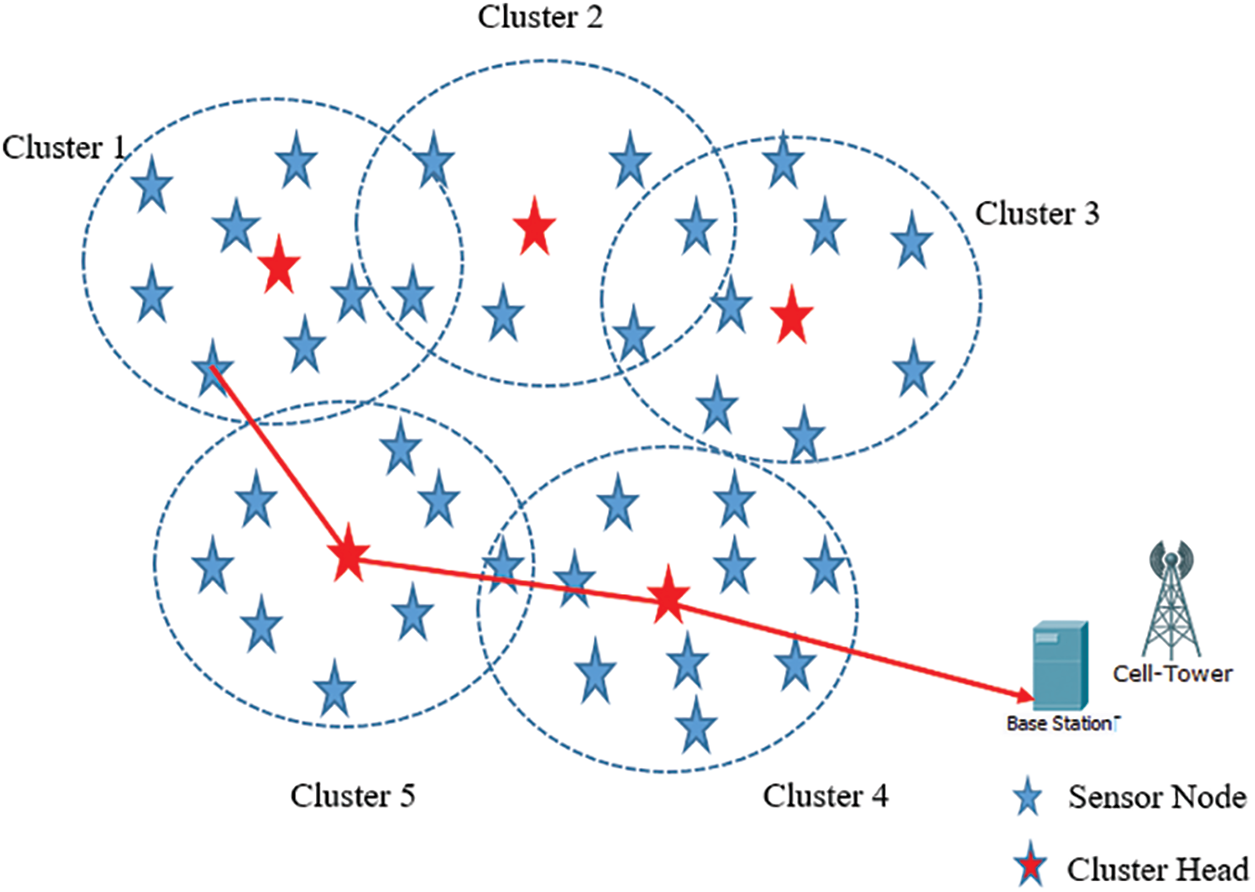
Figure 1: Clustered wireless sensor architecture
The deployment of WSN routing protocol has different challenging task. At the outset, in a multi hop network, the intermediate node has to transmit packets from one source to destination node [7–9]. Such an intermediate node has to decide which neighbour should forward an incoming data. Second one is higher data redundancy as each node senses same information [10]. The third one is the routing table that list the most appropriate neighbour for any given destinations. Finally, the routing configuration and maintenance is a crucial task. In time constrained applications, data transmission should be happened within a time limit. So the delay for data transmission must be taken into consideration in WSN applications. In order to get balanced and reduced energy consumption, clustering protocol is the most prominent protocol to reduce energy usage in collecting and disseminating data. Fuzzy logic system [11,12] is most promising system model for evaluating diverse parameters in a form of knowledge. Fuzzy logic system is so easy to execute the requirement consequently the overall performance can be improved.
In this paper we propose energy efficient routing protocol using genetic fuzzy logic system which will select optimal routing path based on energy efficiency of sensor node. The overall network throughput can be maintained by reducing delay in data transmission and by increasing the packet delivery to the target.
The following Section 2 outlines related work and motivation regard to study of various cluster based energy efficient routing protocol and limitations identified in existing research work. Proceeded as motivation towards cluster based energy efficient routing protocol with added concept GA based shorted route finding. Section 3 clarifies the system design parameters, algorithm and protocol steps of genetic fuzzy logic system for optimal routing and cluster head selection. Section 4 shows the result and discussion of proposed work. Performance analysis of proposed work in comparison with fuzzy base energy efficient routing protocol and other protocol is given in Section 5. Section 6 concludes conclusion of the paper and future scope.
In this section, comprehensive literature work designing an energy efficient routing based on clustering technology to support hierarchy in network topology proposed by researchers in the area of WSN to prolong the network lifetime is discussed.
Reference [1] author discusses the selection of optimal cluster head that makes the network prompt. So he develops a new clustering model with optimal cluster head selection by considering four major criteria such as energy, delay, distance and security. For optimality he uses hybrid algorithm having the concepts of including dragon fly and fire fly algorithms. Finally, he compares the performance with the conventional model in terms of number of alive nodes, network energy, delay and risk probability.
Reference [7] shows that cluster-based data aggregation in WSN using firefly algorithm. The author focus is the data aggregation, towards that the clustering protocol is employed. In the research. The sensor nodes are divided into several sensing areas using a clustering. Cluster head selection operation is carried out using a combination of the firefly algorithm and the low energy adaptive clustering hierarchy model. The cluster-based firefly algorithm computes fitness function using distance and residual energy.
Reference [9] discusses to achieve efficiency and to extend the network lifetime through fuzzy C-mean clustering for a multihop routing. In their work the entire network is divided into sub cluster each cluster has a head node. The intra routing is established by the member nodes which communicates its head directly and the head node establishing the inter cluster communication. It was an improvement of low energy adaptive clustering hierarchy protocol.
Reference [11] proposes a fuzzy based balanced cost CH selection algorithm which contemplates the remnant energy, farness from sink, the density of the node in its neighborhood as input parameters to fuzzy inference system. The author compares the network throughput with the low energy adaptive clustering hierarchy protocol.
Reference [13] outlines energy efficient clustering techniques to improve the lifetime of wireless sensor networks. The author proposes fuzzy logic based cluster head selection, sleep duty cycle of sensor node, hierarchical clustering.
From the literature review, many researchers proposed cluster based energy efficient routing protocols and different parameters like packet delivery, delay in transmission, energy efficiency and throughput are taken to measure the performance. But more research is required in optimal routing path selection, fault tolerance, self-organizing capacity, spatial coverage ability etc. There is still a lot of research needed as the level of energy efficiency in real time applications varies. As the performance of energy efficiency in real time applications varies, still a lot of research required.
This paper proposes two main process to find optimal shortest path using genetic fitness function and selection of CH based on fuzzy rule based logic with genetic base optimization and cluster formation using Fuzzy membership logic.
Fig. 2 depicted below shows how the nodes are deployed in a network. Each sensor nodes are configuring with equal capability of having processing unit, sensing unit and power unit. The distance between sink node and the sensor node is calculated by receiving the satellite signal from the BS. At that time, the energy consumption is calculated when each node receives this signal. The relative location of the sensor node is calculated by broadcasting the hello message to each other within the cluster and to other clusters too. When the energy level of the node is lower than the threshold value, the node is washed out from the routing link.
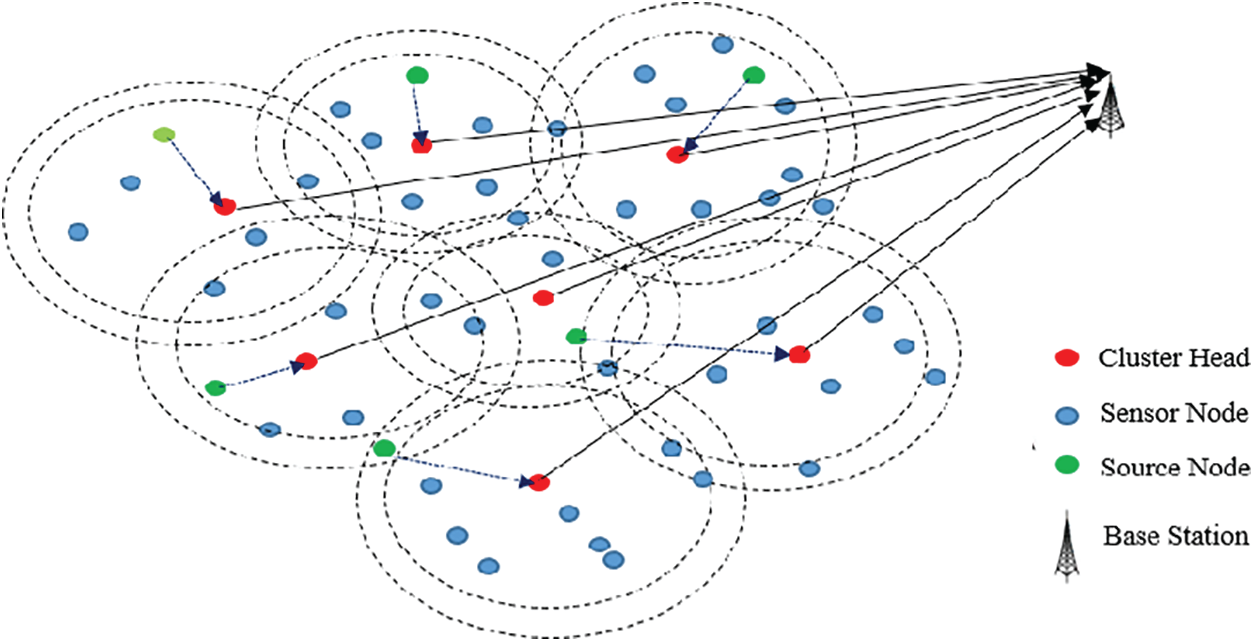
Figure 2: Proposed clustered base routing in WSN
Creating another virtual cluster within this cluster is likely to reduce the routing cost if the node has the opportunity to be a qualified head near the cluster boundaries. So the CH can be elected from the cluster region and also from the virtual region which will minimize the routing cost.
The proposed approach sets sensor node in the cluster’s center is whished for CH for the clusters [14]. The sensor nodes deployed near to the cluster edges has probabilistic chance to be elected as CH within the which will be considered as the intermediate node between clusters. The cluster diameter is calculated with Eq. (1). The onset energy value T is calculated and is propagated to every sensor node in all clusters along with the CH nomination. So the sensor node can maintain its energy to avoid the redundant inter cluster routing. These sensor nodes rely the packets to its neighbour node, at the same time it will identify the energy level of the neighbour.
Dm=√∑Ni=1∑Ni=1(tip−tiq)2N(N−1) (1)
Electing node as CH is considered as a constrained factor. The optimal power control mechanism is essential to reduce the power consumption in every network transmission so that the lifetime of the network may have chance to be extended. The energy consumption of the CH is needed to aggregate the data for the transmission to the neighboring cluster and to the BS. The total residual energy is described between the total initial energy and consumed energy by the sensor node by ERes = EIni – ECons, where EIni is initial total energy and ECons is consumed energy in every transmission. The listening sensor node sends link request to the CH within the cluster. The cluster head generates the routing tables for the newly formed cluster. Based on the minimum link cost the inter cluster communication will be established. If the CH energy level is below the threshold level, and the distance to inter cluster is maximum, the sensor nodes near to the same cluster’s edge that is in the virtual cluster region is elected as temporary CH. This temporary CH will make the link to the neighbour cluster. Let k is the cluster, then dist (Ki, Kj) = max (tip, tjq). The temporary apriori CH probability [15] is measured by
CHProb=Pik⋅EResEMax (2)
where
Pik=NNi(k)Nk (3)
The temporary probability of CH is the based on the total energy level consumed by the sensor node which is near to the cluster edge. The total energy consumption of a node will be impacted by the data transfer from source to the target. So the goal is to find the optimal route to minimize the energy usage per packets. The total expected energy consumed by the nodes for one transmission in a cluster per round is total energy of a cluster which is computed by
EIntraCTot=ECH+(NK)EN+ERD+EDA (4)
where ECH is the energy consumption of CH [16], N is no of sensor nodes involved in the transmission link in cluster K. EN is the energy powered by the sensor nodes. ERD is power consumed when receiving data by node in a transmission. The energy consumption for data aggregation (DA) is computed by
EDA=d.n.EReq (5)
where d is data size in bits and n is number of node in the link and EReq is energy required per bit.
ERD=TStart.EIni+n/DDrate.PElec+EDT (6)
where TStart is the starting time EIni is the initial energy, as d is number of bit, DDrate is data delivery rate, PElect is maximum efficiency in output and EDT is the energy utilization in data transmission. The expected energy for inter cluster consumption is computed by
EInterCTot=∑ki=1∑mj=1ETr((j,CH),(CH,BS)) (7)
where ETr is energy consumption for n bit is calculated by
ETr=TStartPStart+n/DR(PElec+Pamp) (8)
where PStart is average power at Time start (TStart). DRate is data delivery rate PElec is highest efficiency at maximum output power and Pamp is amplifier power for WSN.
3.4 Proposed Genetic Fuzzy Logic System (GFLS)
Fig. 3 shows the proposed GFLS algorithm for the selection of cluster head
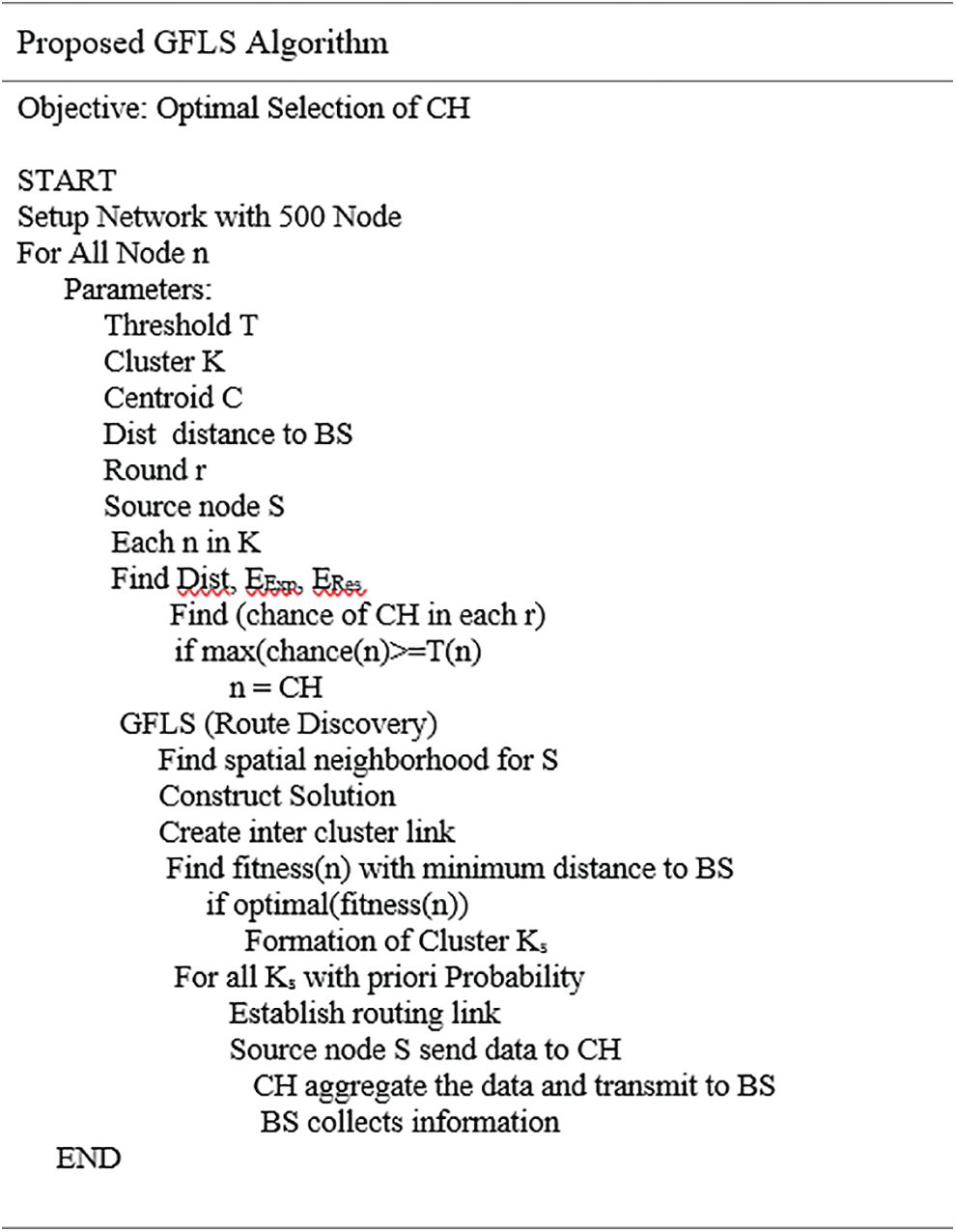
Figure 3: Proposed genetic fuzzy logic system algorithm
The genetic fitness function finds the minimum distance to BS and fuzzy system is constructed to maximize the network throughput and reduce the energy consumption in WSN as like LEACH protocol [16,17]. CH is selected from the total node in every round unless otherwise the center cluster node is drained its energy. The primary parameters such as residual energy of the node, its expected efficiency and its distance to BS are taken from the network to select the cluster head. These three parameters are given to the fuzzy rule based system as a crisp input and generate all intermediate possibilities between false and true are made by fuzzy logic. When sensor node became CH, it advertises message to all other node via network layer that it is CH. Following this advertising message other sensor nodes joins to this CH based on its high signal strength to make the routing link in a network. That is the CH in a cluster waits to receive data signal from sensor nodes depending on the time division schedule. Then CH aggregates the gathered data and organize into packet and send to BS. We employed [6] to calculate for getting chance for each node to be a cluster head using fuzzy rule based logic.
3.4.1 Genetic Learning Approach
The genetic learning approach is the principles inspired by natural population genetics to find solution to the problem. The fitness function optimize the output parameter of rule based fuzzy system with the Eq. (9)
F(CH)=ERes+1Dist(Pos(Node,BS)) (9)
Three network parameters such as residual energy, distance to BS, expected efficiency are given as a input to the fuzzy system is to make the network active for more time [18]. These input parameters are divided into 3 different range of levels such as low, medium and high.
According to these three levels, fuzzy inference system generates at the maximum of 27 possible chances using fuzzy if—then rules to make decision.
3.5 Conventional FCM for Clustering
Clustering is the process of finding groups in unlabeled dataset based on a similarity measure between the data. A cluster contains similar patterns placed together. The fuzzy clustering technique generates fuzzy partitions of the data instead of hard partitions. Given a set of nodes, at any point of set has coefficients, X = x1,…,xk,…,xn, the fuzzy clustering technique minimizes the objective function, O(U, C).
O(U,C)=∑nk=1∑vi=1(uik)md2(xk,ci) (10)
where xk is the k-th D-dimensional data vector, ci is the center of cluster i, uik is the degree of membership of xk in the i-th cluster, m is the weighting exponent, d is the distance between data xk and cluster center ci, n is the number of nodes, v is the number of clusters. The minimization of Eq. (10) can be brought by an iterative process in which updating of degree of membership uik and the cluster centers are found for each iteration through which the degree of membership uik, and the cluster centers, ci are updated in the next coming section.
3.6 Proposed Improved Spatial FCM (ISFCM) for Cluster Construction
The spatial membership function usik of the proposed approach [15] is computed using Eq. (11) below
usik=Pik(∑VJ=1(dikdjk)2m−1)(Nk∑Nkz=1(∑VJ=1(dizdjz)2m−1)) (11)
where, Pik is the apriori probability that kth node belongs to ith cluster and is computed as
Pik=NNi(k)Nk (12)
where NNi(k) is the number of nodes in the neighborhood of kth node which belongs to cluster i after defuzzification, Nk is the total number of pixels in the neighborhood, diz is the distance between ith cluster and zth neighborhood of ith cluster. The center csi of every cluster is manipulated as
csi=∑nk=1(usik)mxk∑nk=1(usik)m (13)
In the proposed approach, two kinds of spatial information are included in the membership function of FCM algorithm. They are given as follows:
Apriori Probability
In order to assign a false node to a cluster that contains a majority of the false node’s neighbourhood as its members, this parameter is incorporated in the membership function. This probability will make the benefit of minimum path cost and reduce energy consumption of a node while routing.
Fuzzy Spatial Information
The second term in the denominator of Eq. (11) is the average of fuzzy membership of the neighbourhood node to a cluster. So, a node gets maximum membership value to a cluster when its neighbourhood node has high membership value to that cluster.
The proposed ISFCM method forms the clustering when the sensor nodes are deployed in the wireless sensor network. The satellite signal is transmitted from the sink node to the sensor node, the distance between any two sensor nodes are computed and at the same time the distance between the sensor nodes and the sink nodes are computed. The inter cluster communication is established with CH. After the formation of cluster in the network the cluster is further clustered based on the sensor node which is near to the edge of the cluster Ki along with the spatial neighbourhood cluster KSj. The cluster edge is exactly the coverage area of the clustered network with the clustering diameter. The new cluster Kp formed and its centroid Cpj is measured. The inner cluster radius is the distance between these two centroids computed by dist (Ki, Kpi) = dist (Ci, Cpi). With the dist (Ki, Kpj), the virtual layer is formed and the sensor nodes which are in between the virtual cluster and the cluster has a chance to be a CH which will be an intermediate node for inter cluster transmission depicted in the Fig. 3.
3.7 Computation of Chance Variable
The three input parameters are given to fuzzy inference system. The fuzzy logic system classifies the input parameters into three different level of output like low, medium and high so that the sensor nodes are identified for the selection of cluster head. The trapezoidal membership function is used for low and high, whereas triangular membership is used for medium level. Fig. 4a shows the membership function for the parameter distance to BS and Fig. 4b depicted the membership function of expected efficiency.

Figure 4: (a) Membership function of distance to BS (b) Expected efficiency
It is observed that Fig. 5a shows that the membership function of residual energy and Fig. 5b shows the membership function of chance which has low and high in trapezoidal and other levels are in triangular membership for easy computation. Before the defuzzification, the fuzzy outputs are optimized by genetic fitness function to establish the link for data forwarding.

Figure 5: (a) Membership function of residual energy (b) Memebership function for chance
The inputs for distance to BS are close, average and far. The output variable for this parameter is classified into nine levels. That are, Very low, Low, above low, medium, below medium, above medium, below high, high and very high. This input parameters and its corresponding output for fuzzification is given in Tab. 1.

This algorithm steps for finding the chance of node to be a CH and also the best route to the BS is given below. The Fig. 6 shows the flow diagram of GFLSs.
Step-1: The source node transmit HELLO message to its neighbour and collect the neighbourhood information. The genetic learning algorithm creates a population and constructs a solution based on the parameter distance to BS. The routing link is discovered from the routing list.
Step-2: Residual energy, distance to BS and expected efficiency are choosen as crisp fuzzy input parameters. The fuzzification creats a crisp input to make a membership of the node as low, medium and high chance category.
Step-3: These parameter values are combined using if-then rules with AND logic and evaluating the exact values for low, high, medium, close, average and far. The aggregation combines all the output evaluation using fuzzy OR logic and generates new fuzzy sets.
Step 4: The defuzzification constructs the chance of node to be CH.
Step 5: The fitness function takes the optmization based on the cost from source to the BS and finds best route for data transmission.
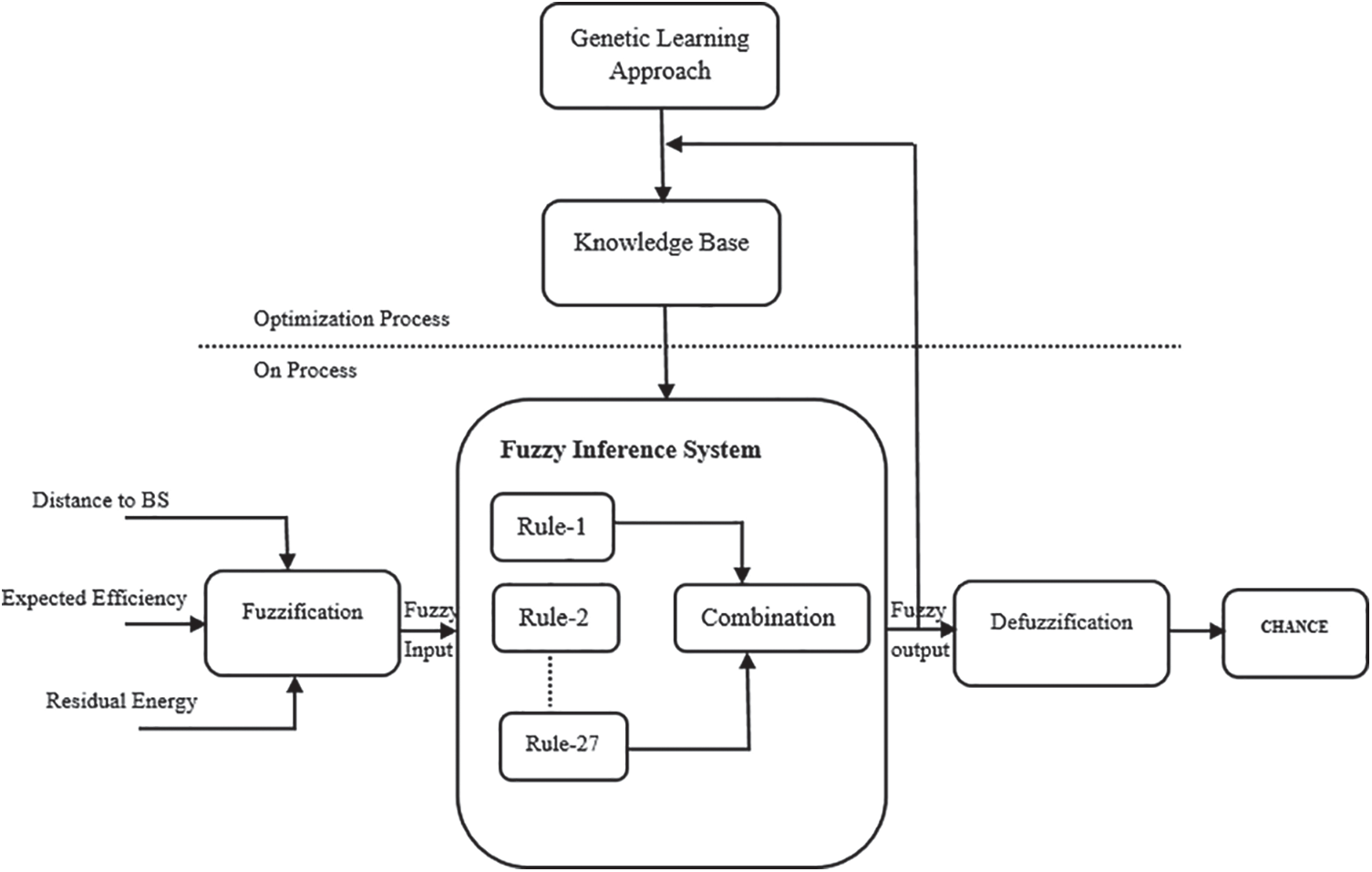
Figure 6: GFLS: The block diagram
4 Result and Performance Analysis
In order to develop the WSN network, MatLab is used for the proposed approach. In this network scenario the maximum of 500 nodes randomly dispersed in 5 cluster with the network area of 1000 m2 is developed. The performance measure is observed in the term of overall throughput, delayed transmission, energy efficiency and packet delivery ratio in each round. The deployed WSN network is shown in Fig. 7. Based on the residual energy computation, the cluster head is identified in red color, and sensing nodes are in black color.
The source node is selected to send the data to base station and the cost effective route established is shown in below Fig. 8.
The Fig. 9a shows the implementation result of residual energy vs. number of nodes at the maximum of 500 number of nodes in the network setup. Fig. 9b depicts the overall throughput (Kbps) over number of nodes with a variable data size. The throughput of the network decreases, the number of nodes increases between source and destination. The reason for decreasing the throughput is the probability of packet error or packet loss in transmission.
Fig. 10a shows the implementation result of total delay occurred in the network per second from the time of data generation until the packets reach at the destination. The most specific reason for this delay is the packets would face processing, queueing, propogation and transmission before reaching the base station. Fig. 10b shows the the packet delivery rate from the source node to the BS over number of nodes. The number of nodes increases, the packet delivery ratio decreases. This means, high number of packets are delivered in low traffic without congestion so that low probability of packet loss in the network.

Figure 7: Cluster head selection and clustering formation
The network throughput can be measured over rounds by sending more packets to the base station. It can be observed in Fig. 11, the proposed approach has delivered 7.98% and 19.08% of packets more than FBECS and LEACH respectively. And the overall throughput of 5.59% and 13.63% more than FBECS and LEACH in comparison which is shown in Fig. 12.

Figure 8: Cluster head selection and inter cluster routing
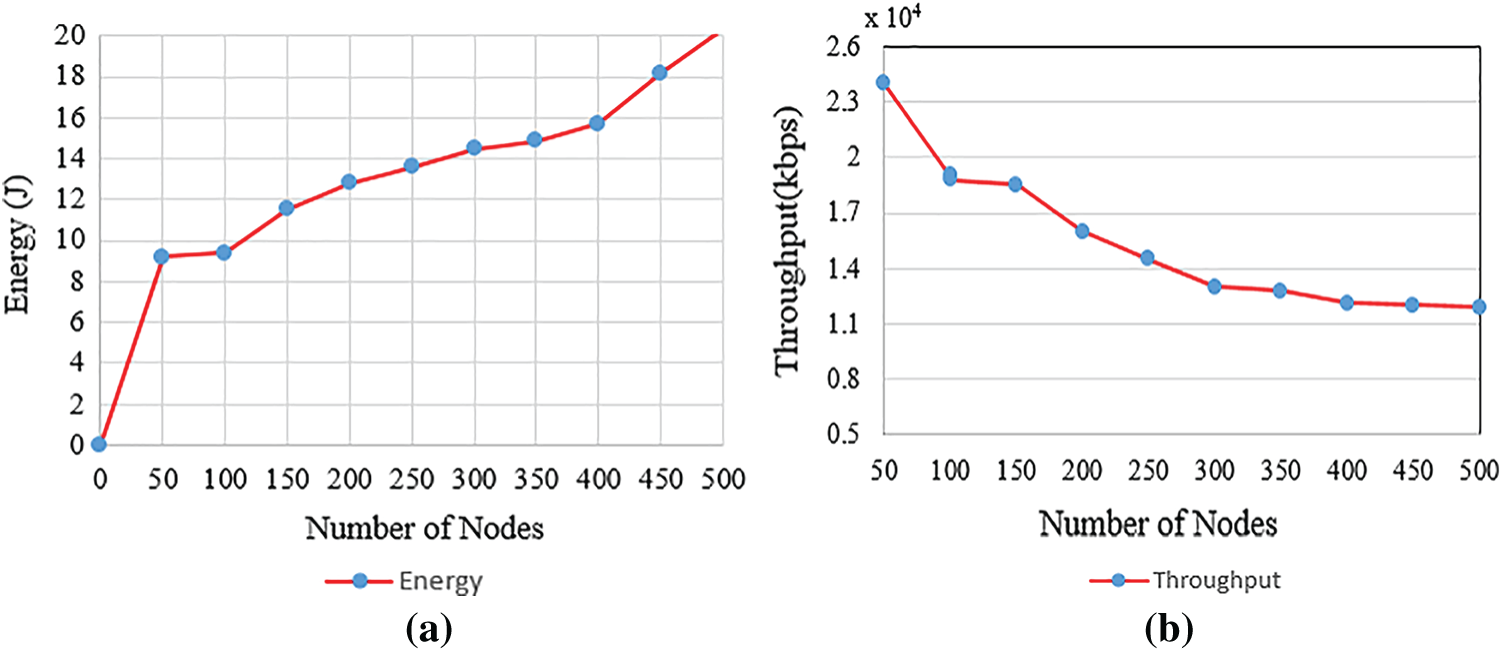
Figure 9: (a) No of node vs. overall energy, (b) No of node vs. delivery ratio
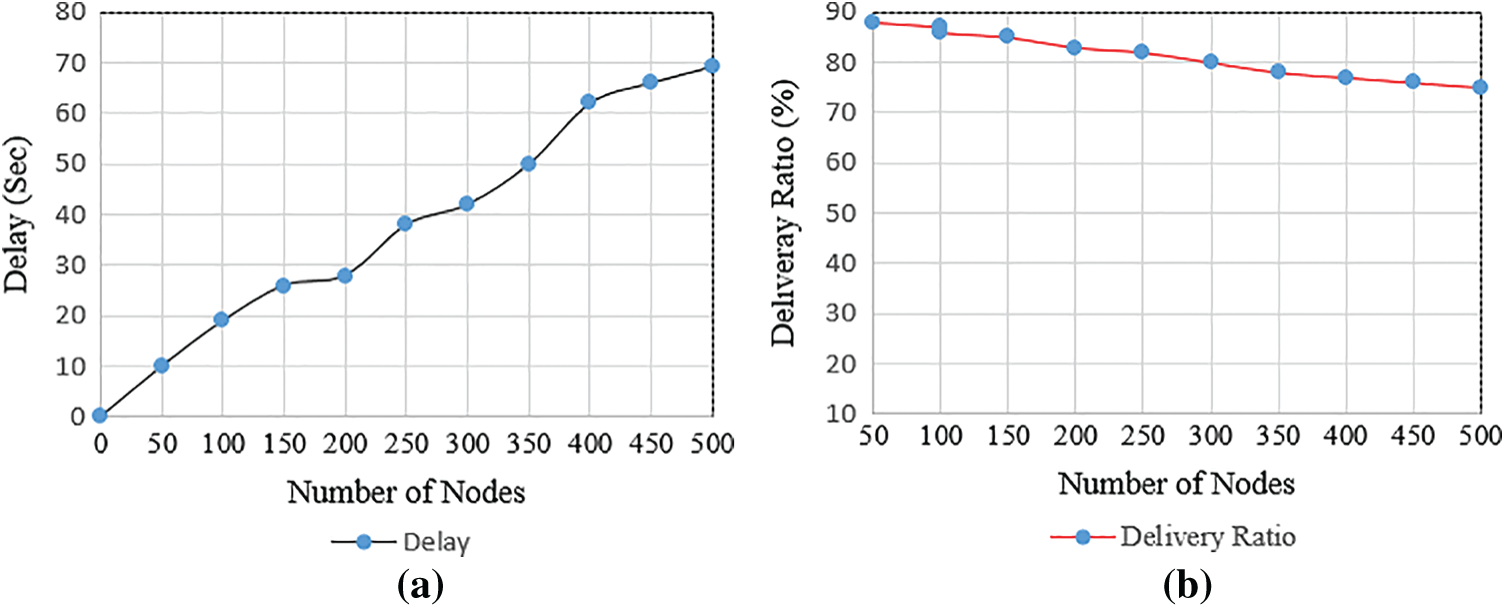
Figure 10: (a) No of node vs. delay (b) No of node vs. delivery ratio
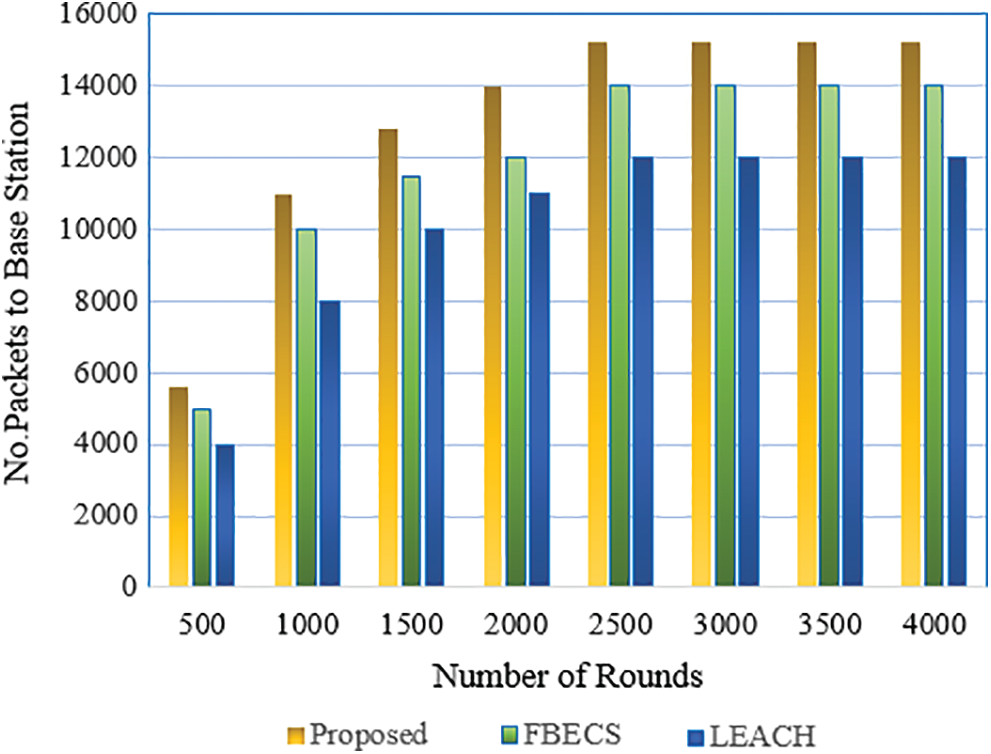
Figure 11: Number of rounds vs. packet delivery (kbps)

Figure 12: Number of rounds vs. network throughput (kbps)
This research work proposes an optimal energy efficient routing protocol based on genetic fuzzy logic system. In this proposed approach it traces a shortest link for data transmission. The higher energy nodes are identified and selected for data transmission from source to the base station and low energy node is sensing the information. An optimal routing is established with proposed approach GFLS, the genetic algorithm finds the optimal routing and the fuzzy logic system finds the cluster head node based on its energy. It gives better performance than the existing FBECS and LEACH algorithm in comparing metrics packet delivery and network’s overall throughput. In future we like to extend the research to increase the speed of network, improving the network throughput, and increase the speed of data delivery.
Acknowledgement: We would like to express our heartfelt thanks to all the good souls who helped us to bring out this research article. We thank our institution for their encouragement and consistent support in doing research.
Funding Statement: The authors received no specific funding for this study.
Conflicts of Interest: The authors declare that they have no conflicts of interest to report regarding the present study.
1. T. A. Alghamdi, “Energy efficient protocol in wireless sensor network: Optimized cluster selection model,” Telecommunication System, vol. 74, pp. 341–345, 2020. [Google Scholar]
2. A. Nayyar and R. Singh, “IEEMARP-a novel energy efficient multipath routing protocol based on ant colony optimization for dynamic sensor networks,” Multimedia Tools and Applications, vol. 79, no. 47–48, pp. 35221–35252, 2020. [Google Scholar]
3. S. Singh, S. Kumar, A. Nayyar, F. Turjman and L. Mostarda, “Proficient QoS-based target coverage problem in wireless sensor networks,” Journal and Magazines, IEEE Access, vol. 8, pp. 74315–74325, 2020. [Google Scholar]
4. A. Ghaffari, “An energy efficient routing protocol for wireless sensor network using A-star algorithm,” Journal of Applied Research and Technology, vol. 12, no. 4, pp. 815–822, 2014. [Google Scholar]
5. A. Shahraki, A. Taherkordi, Ø. Haugen and F. Eliassen, “Clustering objectives in wireless sensor networks: A survey and research direction analysis,” Computer Networks, vol. 180, no. 3, pp. 107376, 2020. [Google Scholar]
6. Z. Chen, Y. Xiao, X. Li and R. Li, “A clustering protocol for wireless sensor networks based on energy potential field,” The Scientific World Journal, vol. 2013, no. 2, pp. 1–7, 2013. [Google Scholar]
7. I. Mosayyar and G. Ghaffari, “Data aggregation in wireless sensor networks using firefly algorithm,” Wireless Personal Communications, vol. 12, no. 1, pp. 307–324, 2018. [Google Scholar]
8. O. Younis and S. Fahmy, “HEED: A hybrid, energy-efficient, distributed clustering approach for sensor networks,” IEEE Transaction on Mobile Computing, vol. 3, no. 4, pp. 366–379, 2004. [Google Scholar]
9. H. Alami and A. Najid, “SEFP: A new routing approach using fuzzy logic for clustered heterogeneous wireless sensor network,” International Journal of Smart Sensing and Intelligent Wireless Systems, vol. 8, no. 4, pp. 2286–2306, 2015. [Google Scholar]
10. M. Ibrahim, S. A. Nor and M. Mahmuddin, “Data redundancy reduction in wireless sensor networks,” Journal of Telecommunications, vol. 10, no. 1–11, pp. 2289–8131, 2018. [Google Scholar]
11. P. Mehra, M. Doja and B. Alam, “Fuzzy based enhanced cluster head selection (FBECS) for WSN,” Journal of King Saud University-Science, vol. 32, no. 1, pp. 390–401, 2020. [Google Scholar]
12. B. Balakrishnan and S. Balachandran, “FLECH: Fuzzy logic based energy efficient clustering hierarchy for nonuniform wireless sensor networks,” Wireless Communications and Mobile Computing, vol. 2017, no. 1214720, pp. 1–13, 2017. [Google Scholar]
13. I. S. Akila, S. V. Manisekaran and R. Venkatesan, “Modern clustering techniques in wireless security networks for wireless sensor networks insights and innovation,” 2017. [Online]. Available: http://www.intechopen.com//books. [Google Scholar]
14. I. Gupta, D. Riordan and S. Sampali, “Cluster head election using fuzzy logic for wireless sensor networks,” in Proc. CNSR, Halifax, NS, Canada, pp. 255–260, 2005. [Google Scholar]
15. S. Z. Beevi, M. Sathik and K. S. Kannan, “Robust fuzzy clustering techniques with spatial neighborhood for effective medical image segmentation,” International Journal of Computer Science and Information Security, vol. 7, no. 3, pp. 1947–5500, 2010. [Google Scholar]
16. R. G. Zhang and S. Gong, “Improving on LEACH protocol of wireless sensor networks using fuzzy logic,” Journal of Information & Computational Science, vol. 7, no. 3, pp. 767–775, 2010. [Google Scholar]
17. A. Ali, S. Al Shammari and M. J. Marie, “Performance evaluation of wireless sensor network using LEACH protocol,” Indonesian Journal of Electrical Engineering and Computer Science, vol. 19.i, no. 1, pp. 395–402, 2020. [Google Scholar]
18. J. M. Kim, S. H. Park, Y. J. Han and J. M. Chung, “CHEF: Cluster head election mechanism using fuzzy logic in wireless sensor networks for advanced communication technology,” in Proc. ICACT, Gangwon, Korea (SouthIEEE, vol. 1, 2008. [Google Scholar]
 | This work is licensed under a Creative Commons Attribution 4.0 International License, which permits unrestricted use, distribution, and reproduction in any medium, provided the original work is properly cited. |